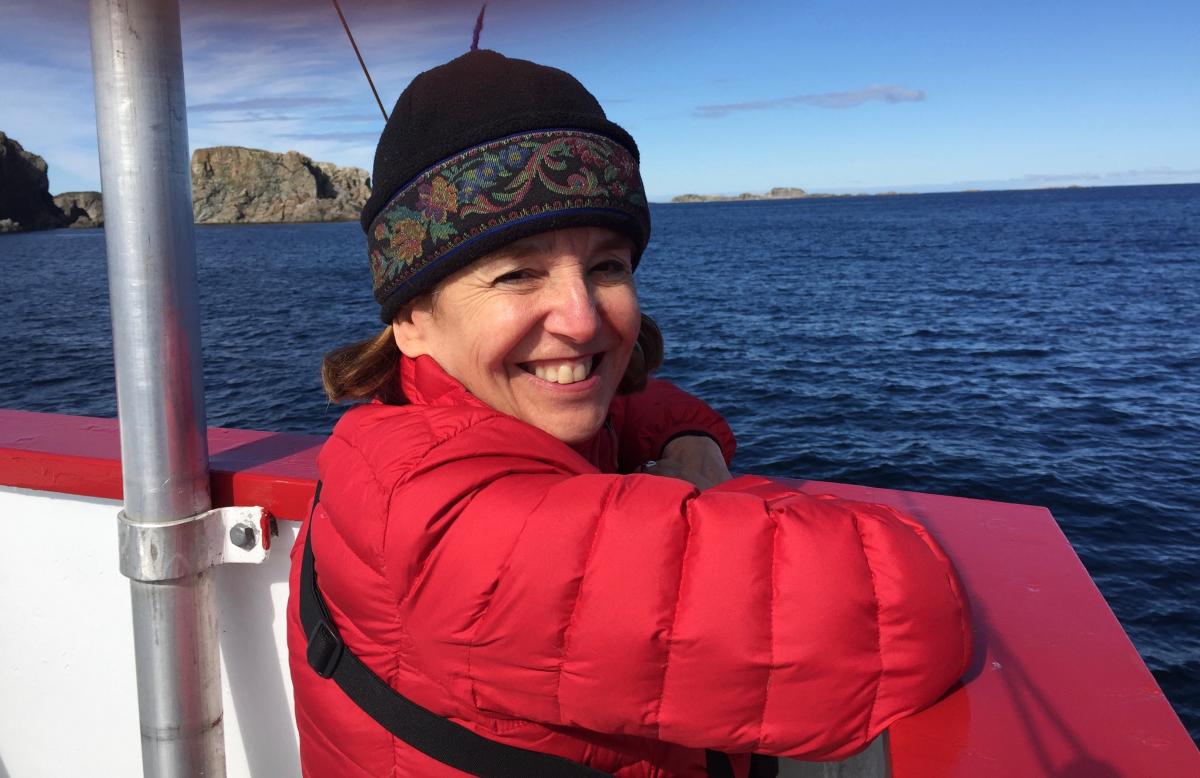 TAC: Tell us about yourself!
TAC: Tell us about yourself!RT: Born and raised in Ontario, I moved to BC after my undergrad to follow my passion for marine mammals and never left. Following a Masters in Natural Resource Management, I specialized in environmental assessment, much of that in the transportation field. Through my work and involvement with TAC, I have been fortunate enough to spend time in all of Canada’s provinces and territories and be in some amazing places. Because of COVID-19 and the hard work of my husband, Ford, I now get to work remotely from Mudge Island, a small community near Nanaimo, BC.
I am a passionate naturalist on a lifelong learning quest about birds, mushrooms, whales, and anything else out there.
A fun fact about me: a gray whale once took me for a ride on its back. In addition, as some of my TAC colleagues may know, due to my diminutive stature, I refrained from using my alternate married name, Precious, as a professional.
RT: Some wonderful mentoring and encouragement from colleagues took me into the world of transportation. From there, it has been the unique and multi-disciplinary challenges of each project that have kept me engaged and interested as a consulting professional with over 30 years of experience in the transportation sector. At Hemmera, my role currently is as the Environmental Lead on several major transportation projects, including Highway 1 reconstruction, SkyTrain and a gondola (yes, that’s right). In this role, I particularly enjoy mentoring intermediate and senior staff, providing a team approach to problem-solving and providing strategic advice to clients for environmental aspects of planning, procurement, and construction activities.
RT: Habitat enhancement projects associated with the Port Mann / Highway 1 Improvement Project were probably the single most satisfying achievement. Two of these enhancement projects were the largest of their kind undertaken by the BC Ministry of Transportation and Infrastructure with the creation of over 6.5 km of channels. In 2012, our team won the TAC Environmental Achievement Award for one of these, at Colony Farm Regional Park in Metro Vancouver. I was the Environment Lead for planning, construction, and post-effectiveness monitoring, overall, a ten-year process! This enhancement project overcame many initial public and stakeholder concerns to eventually achieve staunch support for our work through highly collaborative approaches to design and construction involving stakeholders and First Nations.
RT: The 2012 TAC Conference in Fredericton was my first exposure to TAC, when our project won the TAC Environmental Achievement Award. After that, I was hooked and shortly became the Chair of the Environment Council. I am grateful that both Hatch and Hemmera have been supportive of my continued involvement in TAC. I have continued to chair conference sessions, participate in the Environment and Climate Change Council (ECCC) and its committees, support volunteer projects, as well as help develop pooled-fund project concepts on an ongoing basis since 2012.
RT: Like many of my TAC colleagues, I value our shared focus at ECCC on the development of environmental management practices and overcoming regulatory and implementation challenges, all informed by practical experience. ECCC offers incredible opportunities, not only to network but develop long-term friendships. This strength of relationship makes it easy to pick up the phone or drop an email to other ECCC members to discuss issues and ideas, even outside of official TAC meetings. Participation in conference and meeting planning has enabled me to delve more deeply into certain topics and stretch my leadership wings, which I can in turn share with my colleagues at Hemmera.
RT: Roadways have unfortunately been significant vectors for invasive species and therefore, transportation land managers are important to managing these threats to biodiversity and road infrastructure. In addition to TAC’s recent guidance document on roadside ecology, gearing a volunteer project on invasive species management geared specifically to transportation land managers has been a volunteer project I have been privileged to be part of.
RT: Follow your passion, be open to mentoring, get on-the-ground construction experience, and enjoy the road to finding solutions (forgive the pun).